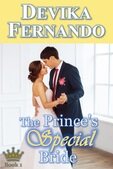Adite Banerjie | Paromita Goswami | Preethi Venugopala | Reet Singh | Ruchi Singh | Saiswaroopa Iyer | Sudesna Ghosh
E for Epilogue
Here are three common purposes of epilogues (with a main focus on the romance genre):
1) The Epilogue as a HEA
HEA stands for ‘Happily Ever After’ and is one of the most important aspects in a romance novel. Some authors choose to write an ending that is tightly connected to the climax and conflict resolution. Perhaps the hero saves the heroine, perhaps the couple meets again and resolves a misunderstanding, perhaps a journey or quest has ended. The reader knows that all will be well and that the protagonists are indeed in love and can live their feelings. Sometimes, that doesn’t feel quite enough. An author might want to offer their readers a glimpse of the couple’s future and end things on an even happier note.
This can be achieved with:
- A wedding
- A scene of blessed family life years later with a child, or a pregnancy
- Another love scene, especially in erotic romance
- An event that shows the blissful couple together, e.g. a celebration/Christmas/a reunion of a circle of friends
2) The epilogue as coming full circle
Sometimes, an author will write the epilogue in much the same way as the prologue or the first chapter, with some crucial changes to reflect all that has happened throughout the course of the story. It serves to let the story arc and character development come full circle and summarize just how significant the happenings in the book were. I chose to do a similar thing in my first royal romance novel THE PRINCE’S SPECIAL BRIDE (currently available for free download here). In the beginning, the protagonist Marie watches a sunset in the Maldives, alone and somewhat brooding, only to be interrupted by a surprise encounter. In the epilogue months later, Marie watches another sunset in the Maldives – but the reader realizes it’s her honeymoon, she’s with the love of her life, and things have changed. This technique isn’t just used in romance novels but also in fantasy and dystopian stories where the world was either in chaos and is now mended, or the other way round but with hope for the future.
3) The epilogue as a teaser of more to come
This is a way to use an epilogue that I turn to very often. If you have books that are part of a series, this separate chapter is the perfect method to make sure readers know about the sequel(s) and are hooked enough to buy them. If the series features the same main characters or characters that were only briefly mentioned in this book, then a pivotal scene with them can be a successful tease. The author may set the scene by having a ‘girl meets boy’ scenario, and the next book takes it from this first encounter to tell their story. I have used a similar method to link my royal romances together. The couple are enjoying their HEA but then they receive news in one way or another that hints at the next book in the series.
To epilogue or not to epilogue?
Many writers ask themselves whether they should include an epilogue or not. Ultimately, they choice is theirs, and there’s no right or wrong. The following questions may help with the decision:
- Is there anything left to tell, maybe some loose ends to tie up?
- Would an ‘even happier ever after’ fit the writing style, story arc and characters?
- Is there a sequel to announce?
- Will I ever return to this story or does it deserve a final summary?
All in all, epilogues aren’t really necessary but can be the icing on the cake or the cherry on top of the icing. Often, readers will fall in love with the protagonists as much as the author and will gladly share a few more stolen moments with them – as long as these moments are not mundane, out of character or overshadow a somewhat flat-falling ending.















 RSS Feed
RSS Feed